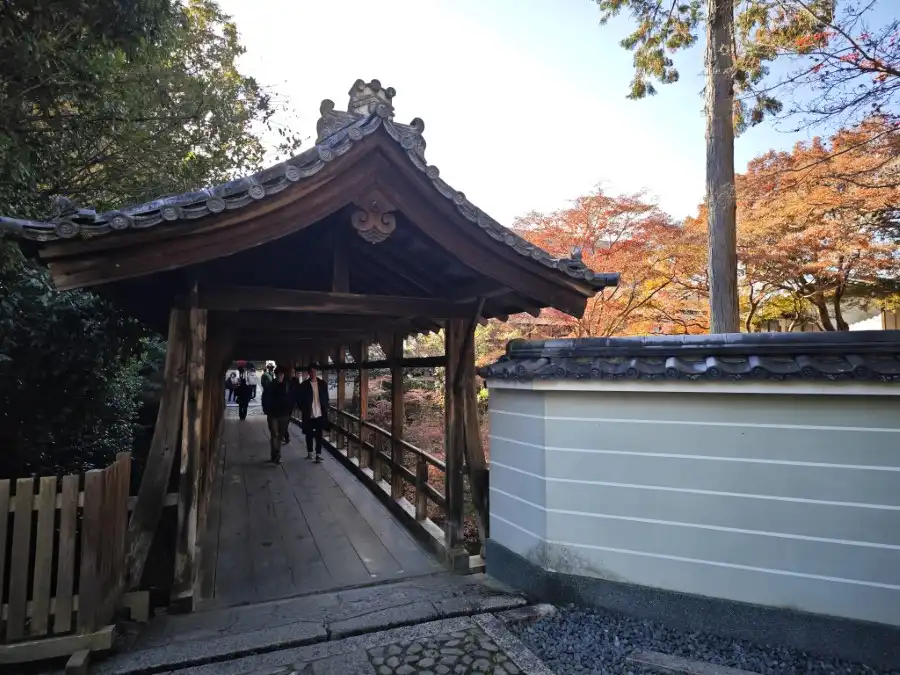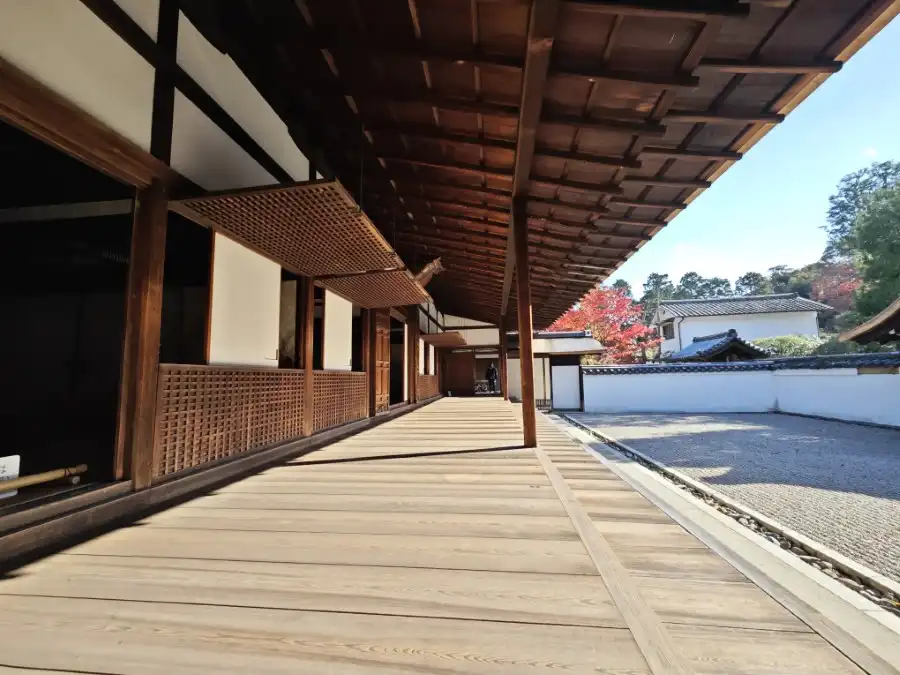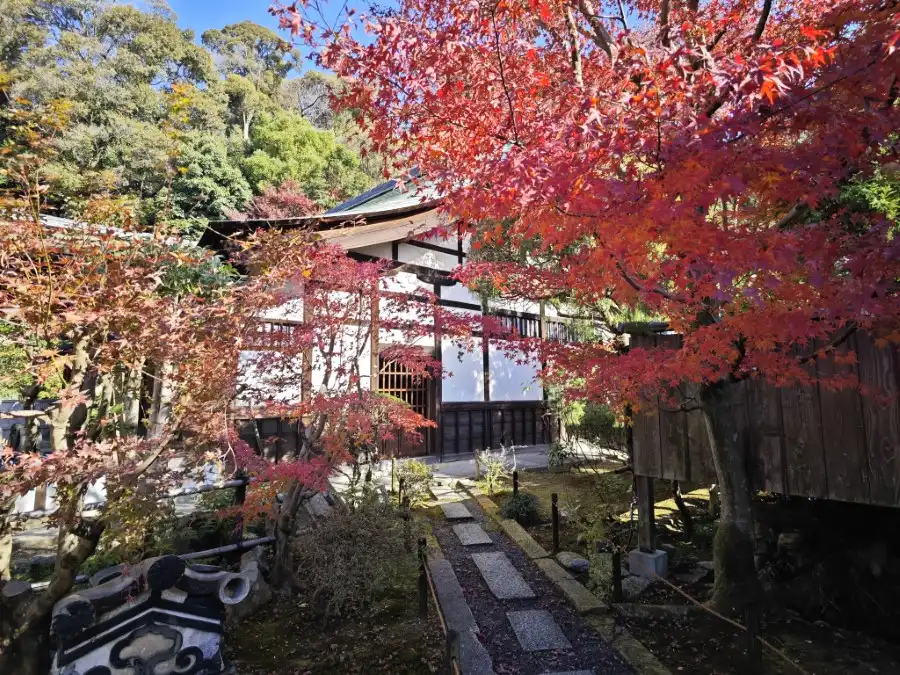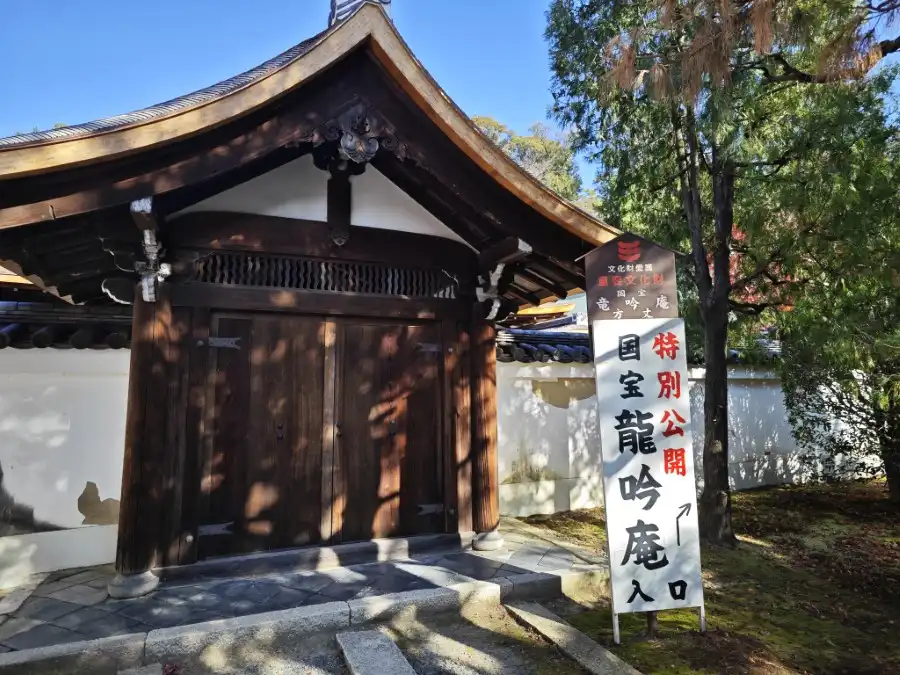Nestled near Tofukuji Temple, Kyoto’s Ryogin-an beckons with historic charm. Home to Daimin Kokushi’s residence, it boasts Japan’s oldest Hojo, a national treasure with elegant shoin-zukuri and shinden-zukuri styles. The Kaisando-Do holds Daimei Kokushi’s statue and remains, designated as Important Cultural Properties. Renowned for its three gardens, Shigemori Mirei’s creations captivate, from the ceremonial “Garden of Nothingness” to the symbolic “Dragon Garden” and the poignant “not leaving alone garden.” Experience the timeless allure of Ryogin-an, a sanctuary of cultural treasures and natural beauty in the heart of Kyoto.
Ryogin-an is located northeast of the main temple complex of Tofukuji Temple, across the Engetsukyo Bridge from behind the Honbo Kouri. Engetsukyo Bridge was built in 1603 and is an important cultural property. There are three bridges in Tofukuji Temple, but only Engetsukyo Bridge has remained unchanged since its construction.

History
Ryogin-an is the site of the residence of Daimin Kokushi, the third abbot of Tofukuji Temple from 1281. This temple is the first-ranked sub-temple of the Tofuku-ji temple. Daimin Kokushi died here in 1291 just after the opening of Nanzenji Temple.
Hojo is the oldest existing hojo building and is a national treasure. This elegant building is a fusion of the shoin-zukuri and shinden-zukuri styles. The characters for “Ryoginan” on the front center of the hojo was written by Ashikaga Yoshimitsu, the third shogun of the Muromachi Shogunate at the time.

Kaisando-Do is located at the rear of the Hojo and houses a seated statue of Daimei Kokushi (Important Cultural Property). The remains of Daimei Kokushi are buried here. The kuri (residence) and the front gate are also Important Cultural Properties.


Gardens
Shigemori Mirei created three gardens here. He is also the one who created the Hojo Garden at Tofukuji Temple.
The south garden, named “Garden of Nothingness,” is simply paved with white sand. Generally spiaking, the south garden of the hojo was a place for ceremonies in the past. So this garden is following the formal style of hojo garden.

The “Dragon Garden” in the west garden is named after the temple. Here, the abstract masonry depicts a dragon rising from the sea with black clouds billowing out of it.

The courtyard “not leaving alone garden” shows a scene from the legend of Daimin Kokushi’s childhood. In the legend, when Daimin Kokushi was a child, wolves surrounded him in a mountain. But two dogs appeared and protected him. So the stones represent wolves and dogs.

Kyoto City Official Travel Guide
Nearby spots from Ryogin-an
Tofukuji Temple‘s Hojo is just across the bridge.
Another sub-temple of Tofukuji Temple, Sokushu-in Temple is next door.
Related articles:
[…] are numerous sub-temples, the most representative of which are Ryogin-an, Nanmei-in, Komyo-in, Bishamondo Shorinji, Manjuji Temple, Fundain Temple, and […]
[…] national treasure Ryogin-an is right next […]